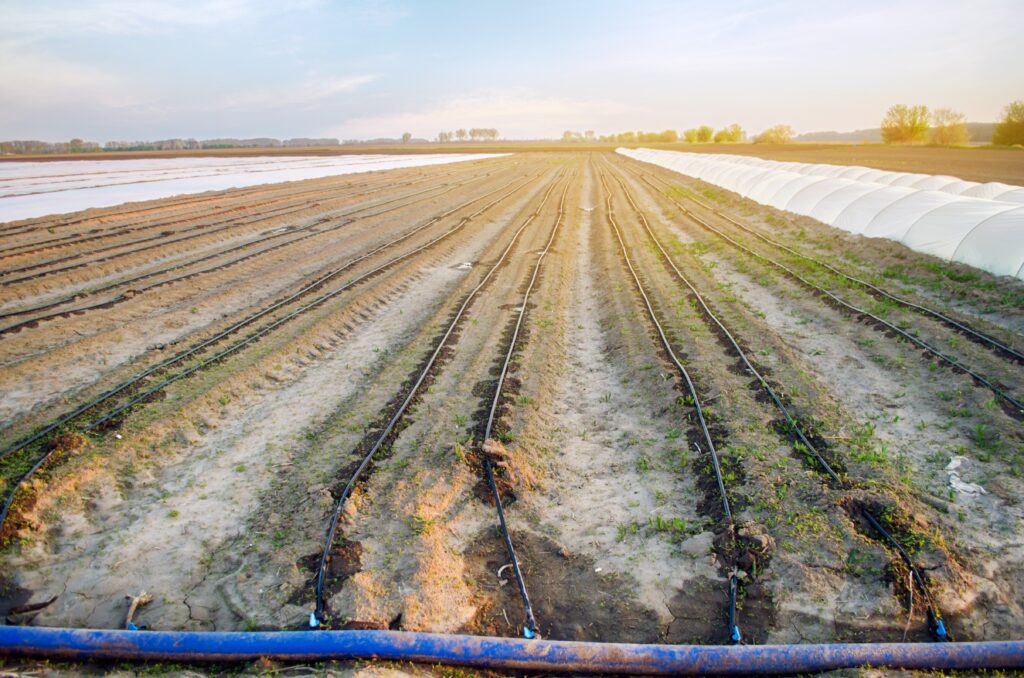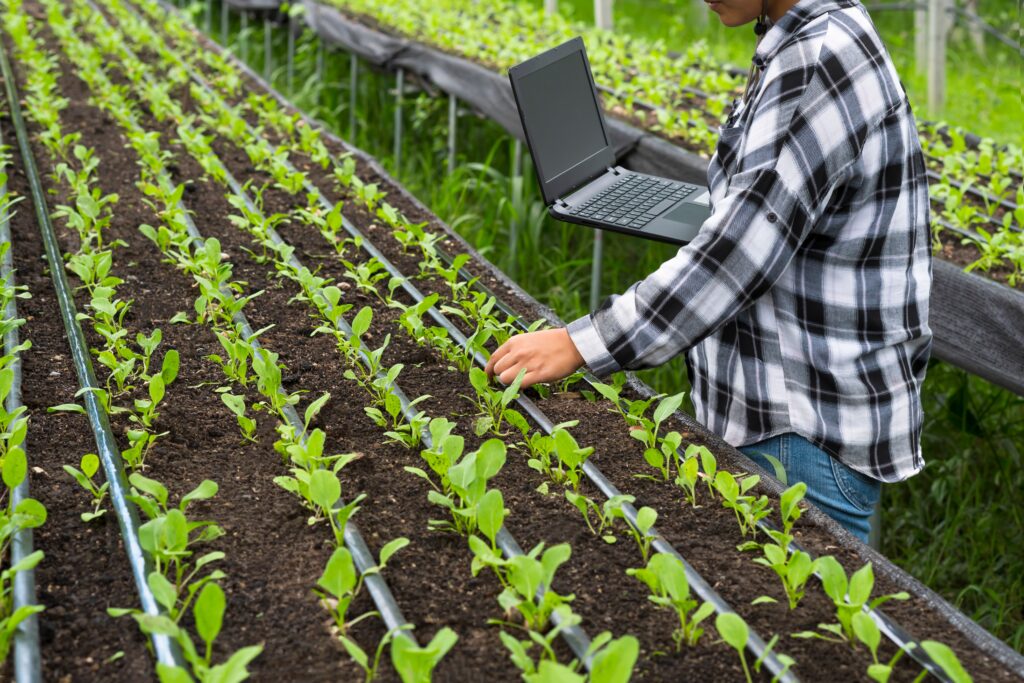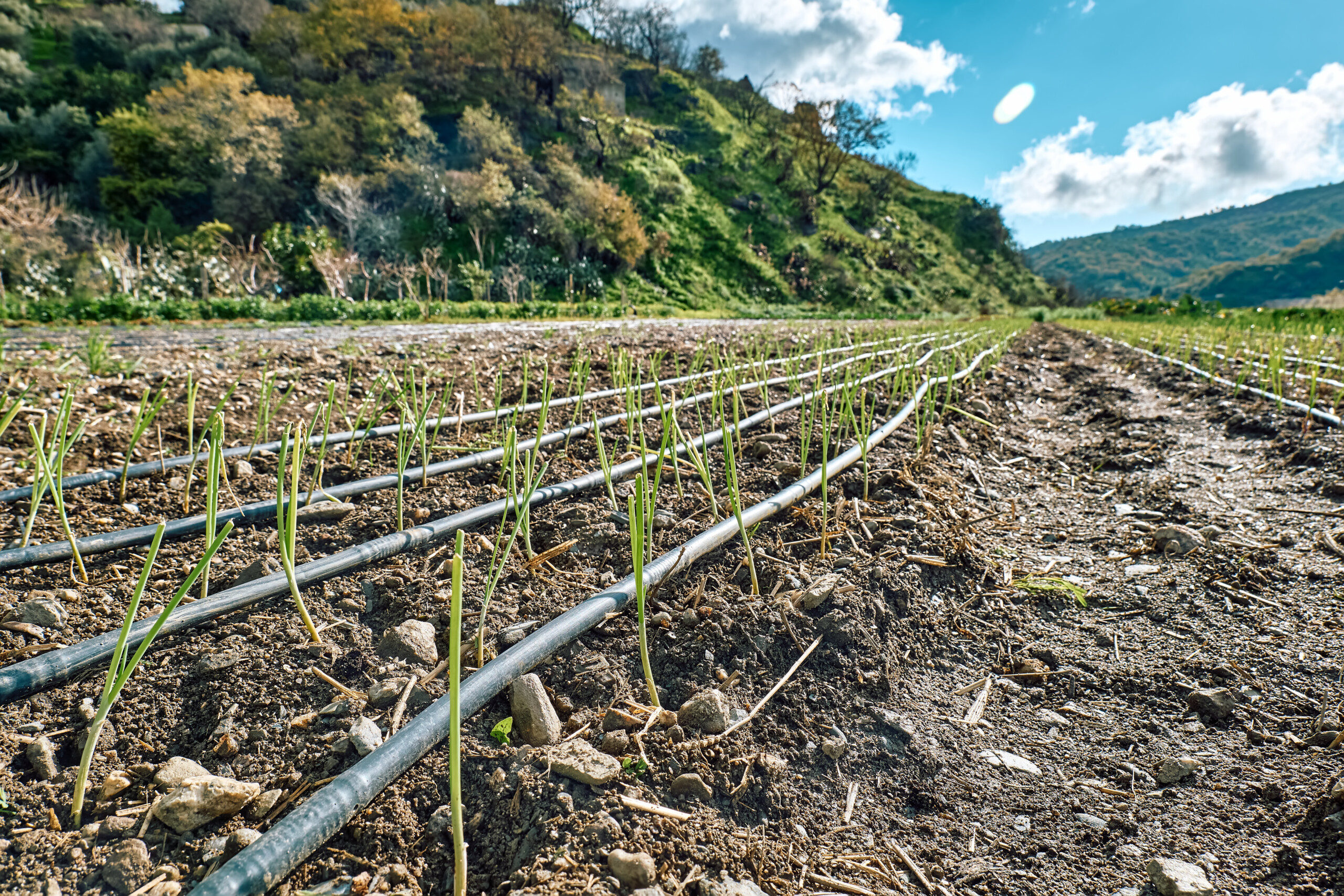Water scarcity is a prevalent issue in growing plants and agriculture.
Drip Irrigation is an efficient watering method that reduces water usage significantly and, at the same time, helps plants grow better.
This article will highlight What drip irrigation is and the 5 Benefits of using Drip Irrigation.
What is Drip Irrigation?

Drip irrigation is a watering system that delivers water directly to the roots of plants.
It is an efficient way to water gardens, as it minimises evaporation and ensures that water is only delivered where it is needed.
Drip irrigation systems can be automated, making them convenient for busy gardeners. They are also relatively inexpensive and easy to install.
There are a few different types of drip irrigation, but all systems share the same essential components: a water source, a filter, a pressure regulator, emitters, and a tubing system.
The water source can be a hose, faucet, or rain barrel. The filter helps to prevent clogging, while the pressure regulator maintains a consistent water flow.
Emitters deliver water directly to the roots of plants, and the tubing system connects everything. With just a few simple components, drip irrigation can make watering your garden more accessible than ever before.
Subsurface Drip Irrigation:
Subsurface drip irrigation (SDI) is a type of irrigation system that utilises buried drip lines to deliver water and nutrients directly to the root zone of plants.
SDI is an extremely efficient irrigation method, as it minimizes evaporation and ensures that water is delivered only to where it is needed.
This can save water, labour, and money, while also reducing the risk of plant diseases caused by overwatering.
In addition, SDI can be used in conjunction with other irrigation methods, such as surface drip or sprinklers. When properly designed and installed, an SDI system can provide optimal watering for any landscape.
Why is Drip Irrigation suitable for plants?
Drip irrigation is often used in greenhouses and nurseries as it is an efficient way to ensure that plants receive the moisture they need without wasting water.
There are several benefits of using drip irrigation, both for plants and for growers. For example, drip irrigation can help reduce the risk of fungal diseases, as the water does not soak the plant leaves.
In addition, drip irrigation can also help to promote healthy root growth, as the roots are constantly being moistened without being waterlogged.
As a result, drip irrigation is an effective way to water plants and can provide numerous benefits for both plants and growers.
5 Benefits of using Drip Irrigation:

There are many benefits of using drip irrigation, including the following:
Water savings:
Drip irrigation is a highly efficient way to water plants and can result in significant water savings compared to other irrigation systems.
In fact, studies have shown that drip irrigation can reduce water use by up to 70% (wateronline) compared to sprinkler irrigation.
It is because drip irrigation applies water directly to the root zone, where it is needed, rather than spraying it onto the leaves and stems.
As a result, less water is lost to evaporation and runoff. In addition, drip irrigation can be programmed to provide just the right amount of water for plants, further reducing water waste.
Energy savings:
Drip irrigation systems use less energy than other irrigation systems because they run for shorter periods.
In addition, drip irrigation systems can be designed to operate on solar power, making them even more energy efficient. As a result, using a drip irrigation system can help to reduce your energy costs.
Weed control:
Drip irrigation can help to control weeds by delivering water directly to the plant roots.
It prevents weeds from receiving the moisture they need to grow.
In addition, drip irrigation systems can be used with mulch or ground cover to prevent further weed growth.
Fertiliser savings:
Another benefit of drip irrigation is that it can help you save on fertiliser costs.
Less fertiliser is needed when fertiliser is applied directly to the root zone through a drip irrigation system because there is less leaching loss and runoff.
In addition, because you can control the amount of fertiliser applied to your plants, you can avoid over-fertilising them, which can cause problems such as leaf burn and root damage.
As a result, using a drip irrigation system can help reduce fertiliser costs.
Disease control:
Drip irrigation can also help to prevent the spread of diseases. It is because the water is delivered directly to the roots of plants, rather than being sprayed into the air, where it can come into contact with leaves and other plant parts.
It reduces the chances of diseases being transmitted through contact with contaminated leaves or other plant parts.
In addition, drip irrigation can help to reduce the amount of leaf wetness, which further reduces the risk of disease transmission.
Frequently Asked Questions
How does drip irrigation work?
Drip irrigation systems work by delivering water directly to the roots of plants through a network of pipes and emitters.
What are the benefits of using drip irrigation?
There are many benefits of using drip irrigation, including water savings, energy savings, weed control, fertiliser savings, and disease control.
What are the benefits of using drip irrigation?
One way to reduce your water use with drip irrigation is to choose a system that is designed to operate on solar power
In addition, you can program your drip irrigation system to provide just the right amount of water for plants, which further reduces water waste.
The Bottom Line:
Drip irrigation is a great way to conserve water, save money on your water bill, and increase the yield of your crops.
If you are not currently using drip irrigation in your garden or farm, we encourage you to give it a try!
You may be surprised at how much of a difference this simple change can make.
